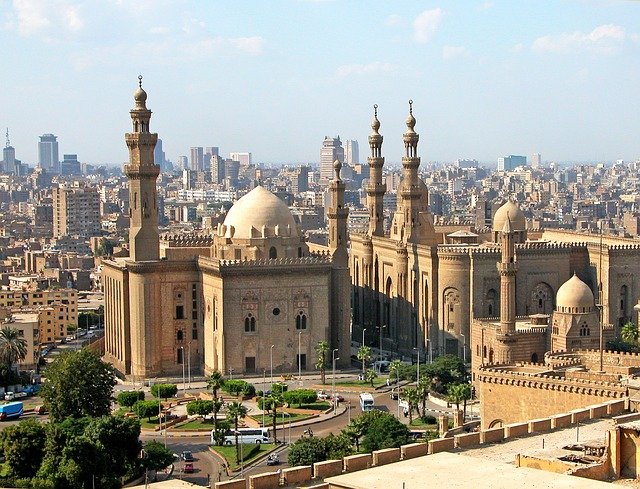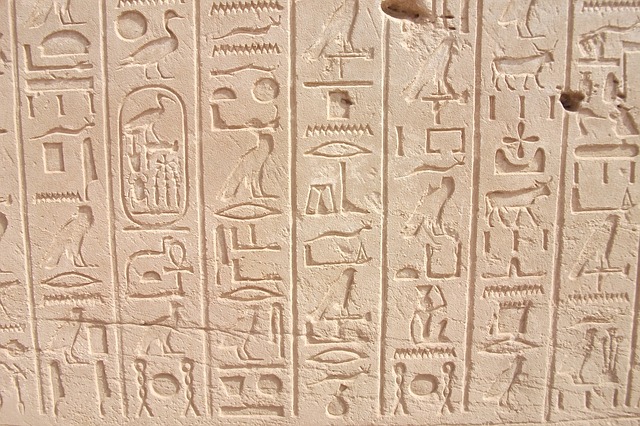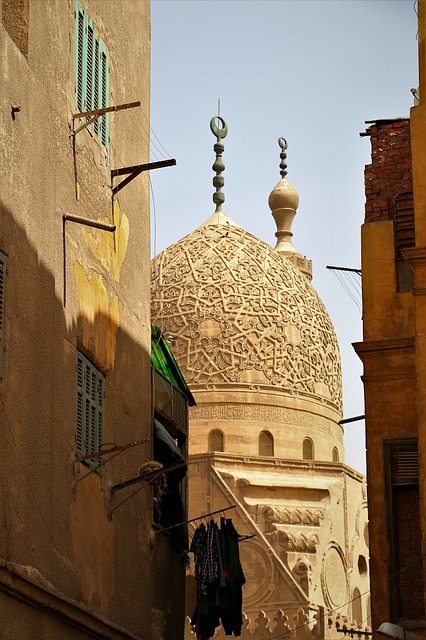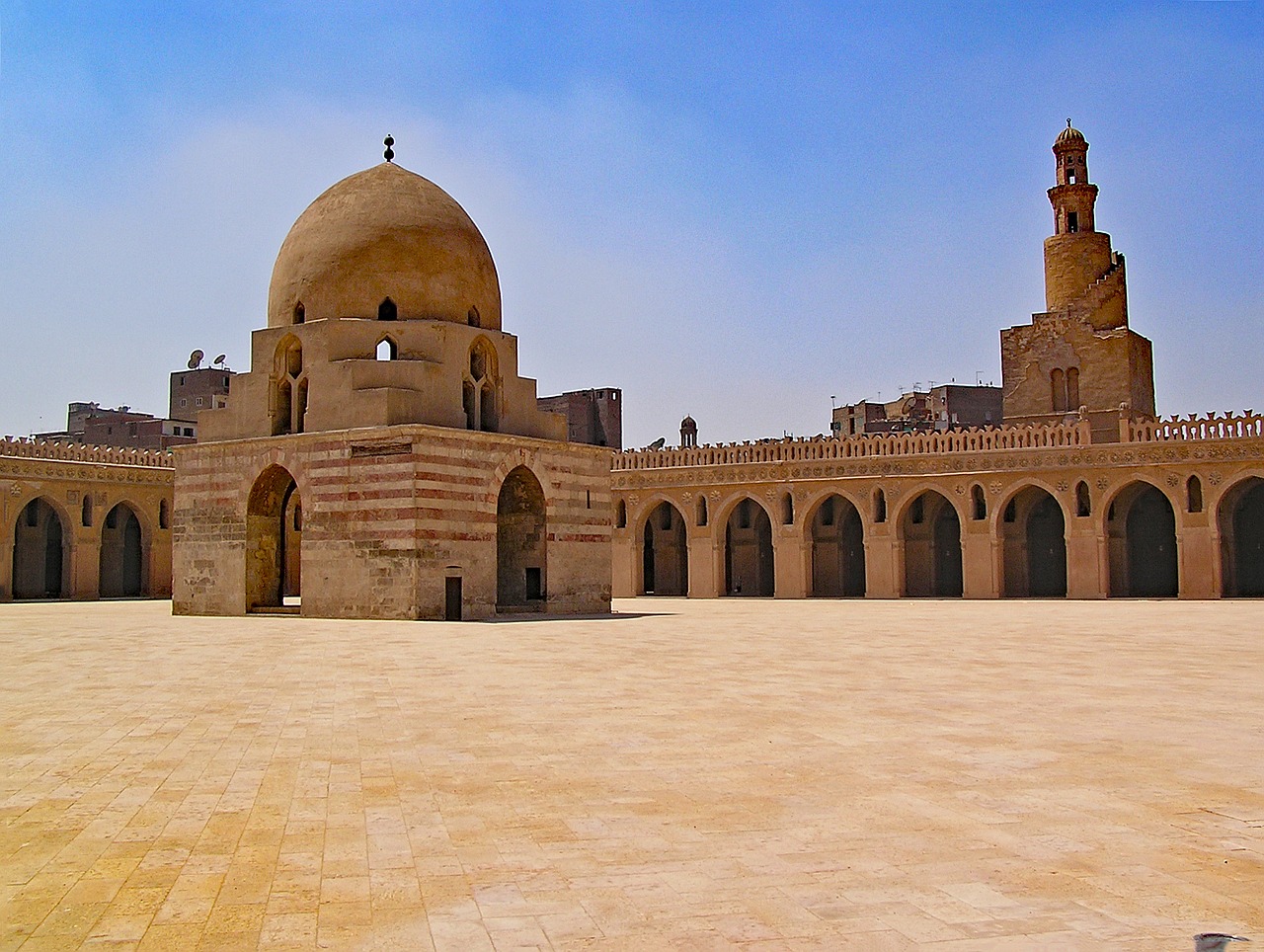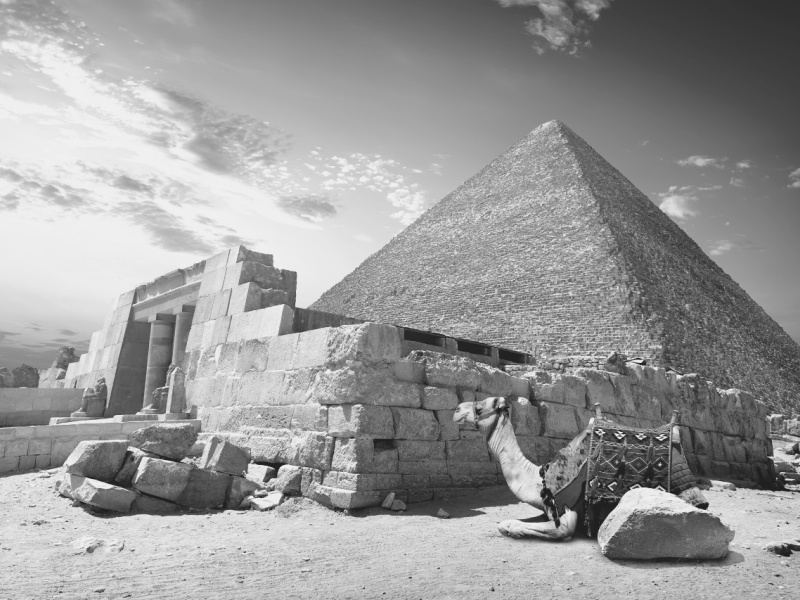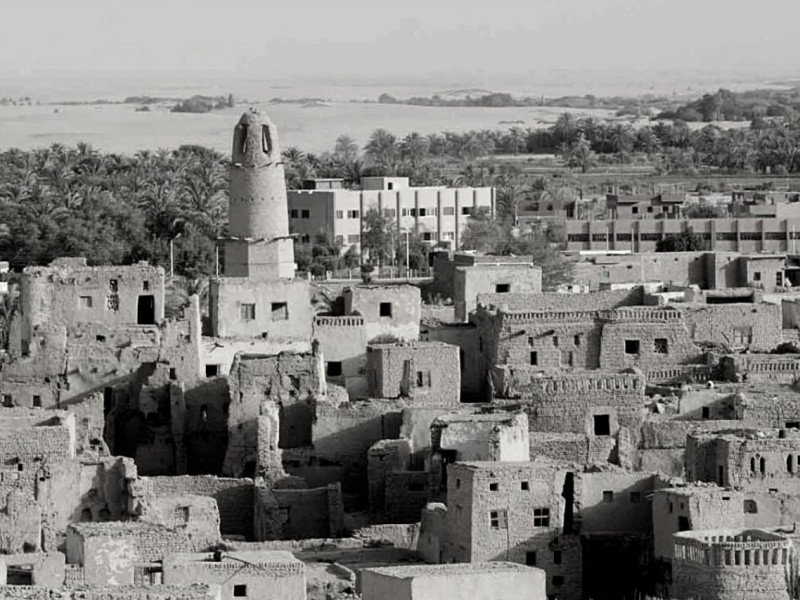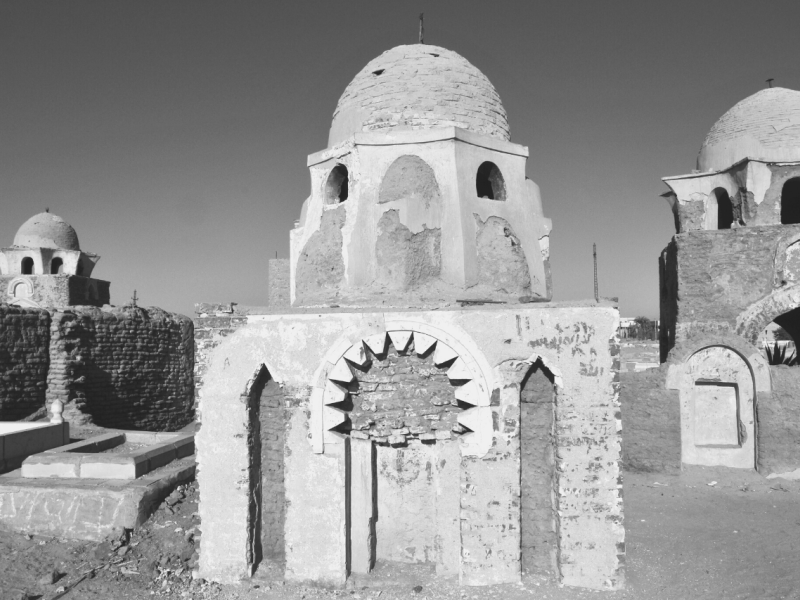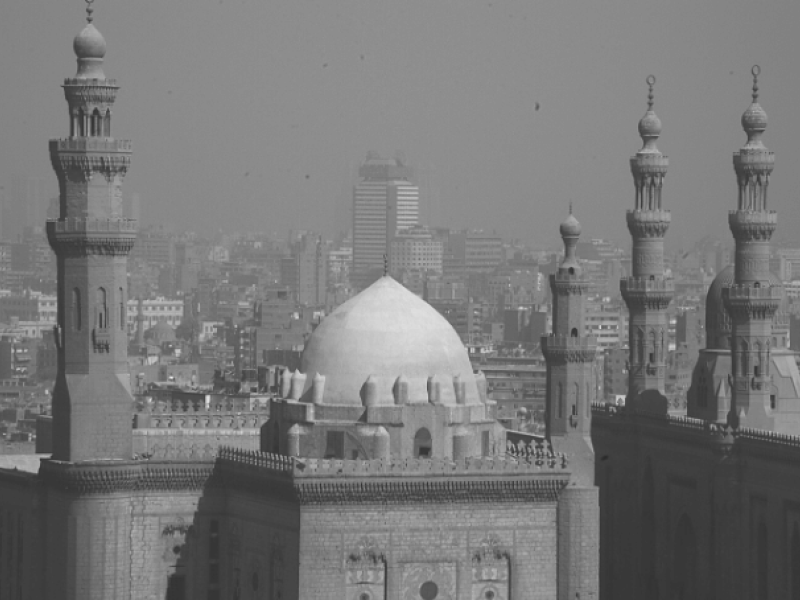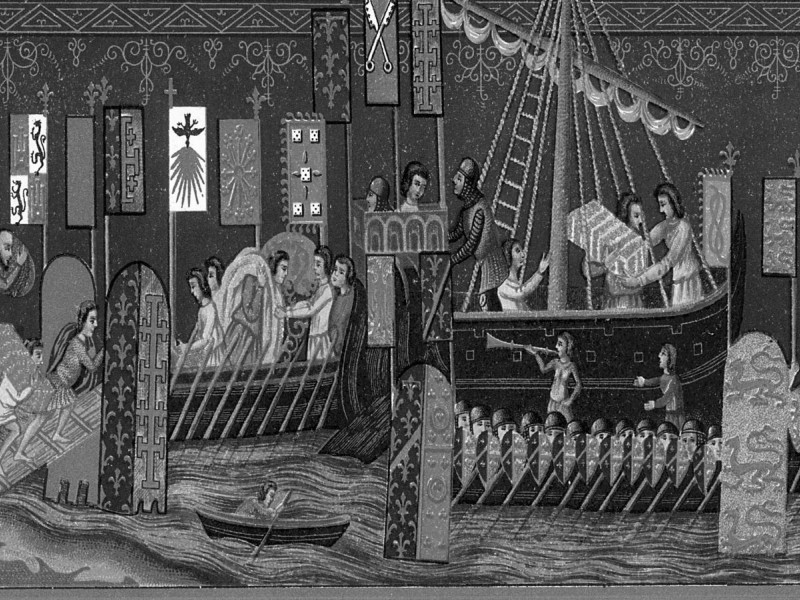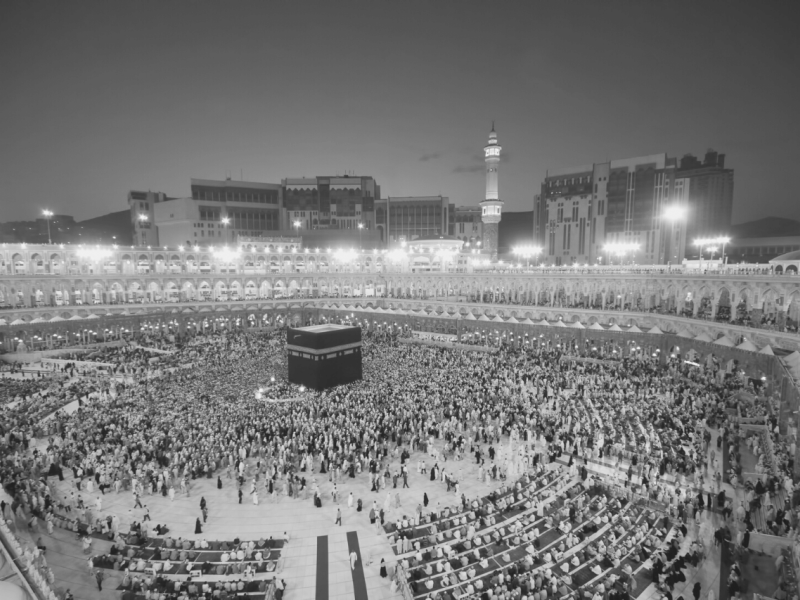Fustat, the Old Muslim Capital of Egypt for 500 Years
Fustat is the “Old City” of Cairo, Egypt’s capital. Fustat was the first Muslim capital of Egypt when a Caliphate’s general conquered it in 640 A.D.
For five hundred years Fustat flourished and became the home of Byzantine Greeks, Coptic Christians, Jews, and Muslims. These communities, while different, demonstrated that multiculturalism can work in a major urban setting. During its tenure as the capital of Egypt, Fustat was twice replaced with other capital cities briefly. The old city is rife with history and contains many landmarks and archaeological sites.
Exactly Where Is al Fustat?
Fustat is in ruins today. But, it is in the southern part of modern Cairo and has many significant archaeological sites. Cairo, and therefore also Fustat, is on the east side of the Nile at the base of the Nile Delta.
The city of Cairo has grown so much that it surrounds all the older, Muslim capital cities, including Fustat. Old Fustat was built there because Caliph Omar did not want the Byzantine Empire’s capital, Alexandria, to remain the capital of Egypt under his rule.
Fustat was first a campground before it became a city. The army of Amr ibn al-‘As was sent to Egypt by Caliph Omar only nine years after the death of the Prophet Mohammed, and he camped outside the old Roman fortress of Babylon. And, according to legend, a dove laid an egg in his tent. He took that has a good omen, and when he and his army returned victoriously, he told them all to pitch their tents near his, and the name “Miṣr al-Fusṭāṭ” was given to the site: ‘City of Tents’.
The “Amr Mosque” stands today where that tent was pitched, named after its founder. It was the first Mosque in Egypt and all of Africa, and epitomizes vintage Egypt. The original building is long gone, and the Mosque has been expanded to be one of the largest mosques in Egypt today. It still has a thriving community of faithful worshippers.
When Was First Built?
Amr conquered all of Egypt for the Muslim Caliphate that year, in 640 A. D. Alexandria was the capital at the time, but soon after, Fustat became the Muslim Caliphates’ first capital of Egypt. At first, the mosque built on the former site of Amr’s tent as the city’s first building was just a few stone walls with a thatched roof made of palm branches, and the city was barely more than a camp. But Amr brought an architect to the site to build the Amr Mosque and the rest of the city. Ubadah ibn al-Samit built the city up into a modern wonder.
By the ninth century, multi-story buildings gave Fustat a unique skyline, unlike many other cities of the day. Some buildings were as large as fourteen stories tall. Travelers described the city as having such high buildings that the sun was blocked by their height so well that even during the day a torch was needed just to move through the streets. It was an advanced city, as seen in the archaeological findings. Archaeology shows that there was an expansive sewer system, and an irrigation system that brought water into the houses.
Who Lived in Fustat?
When Amr first established the “City of Tents,” it was primarily his army and their families that lived there. But, as it became the new capital city of Egypt, after Amr conquered Alexandria, and also destroyed the Roman fortress, Babylon, people began to settle the city in large numbers. By the middle of the 10th century, nearly 200,000 people lived there.
Over the 500 years before Fustat was destroyed, whoever ruled Egypt for the Islamic Caliphate lived in Fustat. When the Abbasids took over in 750, the capital moved to al-Askar until 868. After that, the capital moved to Al-Qatta until 905, when Fustat again became the capital, and the city flourished to its greatest heights. During that time, the famous Jewish scholar Maimonides took up residence in Fustat. He was a Jewish scholar, and while at Fustat also became a merchant of gems, and then practiced medicine.
Recent excavations have unearthed relics from the various communities that settled in Fustat:
Fragments from a Qur’an
Fragments from a Bible
Fragments from a Torah Scroll
A bowl depicting the deposition of Christ
A door from a Torah shrine
A wooden tablet with two-letter Coptic syllables used to teach children to read
Fustat, Egypt was indeed a multicultural city. Emily Teeter, a special-exhibits coordinator at the Oriental Institute in Egypt, said of Fustat, “Globalization is not a new thing. Multicultural societies are not a new concept. Different communities living together created such an incredible community at Fustat.” Communities from each of the three major religions lived alongside each other and thrived together, tolerating one another and enriching each others’ lives in urban centers there.
So where did all of these Christians, Jews, and Muslims come from? When Amr conquered Babylon and Alexandria, many members of the Byzantine communities there were displaced, which included those of all three major religions. As Fustat was quick to rise as a capital city for the new rulers of Egypt, the displaced citizens of those cities looked for and found a new home there.
Muslims from around the Islamic world saw an opportunity in Fustat and began flooding in from Yemen and Arabia. Many of the first Muslim and Jewish residents had come behind Amr’s army, seemingly anticipating his victory and hoping for a new place to settle.
What Was Life Like?
Scholars today look to a set of Jewish documents to learn a great deal about life in the Medieval Middle East, and Fustat in particular. The Ben Ezra Synagogue in Fustat left behind a set of documents that include personal correspondence and religious texts of the day.
The Jewish community first settled in the ruins of the nearby felled fortress of Babylon. But, there is a record that in 882 the Coptic patriarch was forced by King Ahmad ibn Tulun to sell a church within the new Fustat center to the Jewish community, and it became a synagogue. Eventually, there were several Jewish communities in Fustat, including a community of Karaite Jews.
In early Fustat, the variety of communities that settled there is reflected in the number of languages that were spoken there. The religious materials unearthed there indicate that more than four languages were spoken in the early days of Fustat. Greek, Coptic, Arabic, and Hebrew, as well as other Middle Eastern languages, were all spoken in Fustat when it first became a city.
While these communities worked well together and created a unified society, the exhibit of the Oriental Institute Museum shows also that they were distinct communities. Because Coptic Christians spoke both Coptic and Greek, many of them became administrators and tax collectors. Correspondence between Qurra ibn Sharik, the governor between 709 and 714 A.D., and Basileus, the pagarch of Aphrodito, reveals the relationship between the communities. Qurra ibn Sharik is known today as one of the most noted Islamic officials in Medieval Egypt.
Eventually, Christian officials were replaced with Muslim Arabs to centralize the administration of Egypt. Taxes were implemented on a religious basis. Muslims were not taxed but were drafted into military service as an exemption on the taxes. The “jizya” was a religious tax imposed on both Christians and Jews, exempting them from military service. Non-Muslim landowners were also taxed on their land. These taxes supported not only the local Egyptian government but also that of the whole Islamic empire.
The three major communities were otherwise allowed to govern themselves by their legal codes until conflict arose between the communities. If conflicts or disagreements did arise between members of opposing communities, those matters were brought before the central, Muslim government courts.
What Was the Importance of Fustat?
Fustat was the economic center of Egypt. Many markets were created, and trade existed between Egypt and much of the Mediterranean region, Africa, and even Europe. Because it was situated on the Nile Delta, it became an important port for goods brought to Egypt by ship. Modern economists believe that Fustat was a model for future “mega-cities”.
Many factors contributed to the economic success of Fustat and its nearly unprecedented growth. It was situated conveniently near to multiple trade routes of land and sea. Its urban center was filled with various tradesmen because cheap materials and goods were readily available. Access to regional cities increased its ability to trade locally. In short, it was an ideal location for a bustling city, and people soon saw that they could make their lives there.
Why Did it Fall?
Fustat was the capital of Egypt during the Crusades. The Crusades started in 1096. But, the first Crusader incursion into Egypt did not happen until 1154. At that time the Fatimids ruled Egypt and were considered weak by the Christian kingdom in Jerusalem. The first Crusade into Egypt did not reach Fustat. But, in 1163, Shawar became the Fatimid Vizier of Egypt by ousting Nur ad-Din. Nur ad-Din did not consent, but instead installed Shirkuh, a Kurdish military commander, as the Sunni ruler of Egypt.
To contest Nur ad-Din and his vizier, Shawar called upon the enemy of the Sunni Muslim opposition, the French King Amalric of Jerusalem. Shawar, a Shiite, along with Amalric, besieged Shirkuh at Bilbeis, but, Nur ad-Din responded by attacking other Christian strongholds, which caused Amalric to go to their defense. Shawar was safe.
But, Amalric later besieged Bilbeis again, in 1168, for his purposes. He slaughtered nearly all of its inhabitants, and then came near Fustat and gave the threat of similar treatment to the Caliph, Athid, who was only eighteen years old. Shawar, the city’s Vizier, saw the imminent attack, and he ordered an evacuation of Fustat, and that the city be burned. According to an early Egyptian historian, Al-Maqrizi (1346-1442), Shawar sent 20,000 naphtha pots and 10,000 lightning bombs throughout the city, and flames and smoke engulfed the city and created a terrifying scene.
Conclusion
Fustat has an interesting history, as we have seen. So that you can understand its history before you visit Fustat, here is a summary:
Fustat was the first capital city of Islamic Egypt and is surrounded by Cairo today
Fustat sits on the east side of the Nile at the base of the Nile delta, in south Cairo
Fustat was built in 640 by the first Muslim conqueror and ruler of Egypt, Amr ibn al-‘As
Fustat was inhabited by Christians, Jews, and Muslims
Fustat was a mega-city, an example of multiculturalism
Fustat was the economic center of Egypt at the time
Fustat was destroyed by its Vizier, Shawar, to keep it out of Christian hands
On your next trip to Egypt, make sure you visit Fustat, where there are still synagogues, churches, and mosques that bring to life the history of Fustat as a place where multiculturalism worked.
